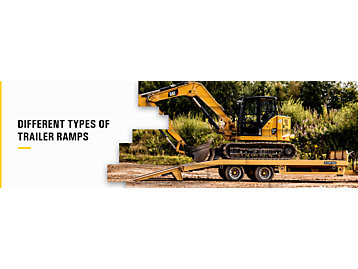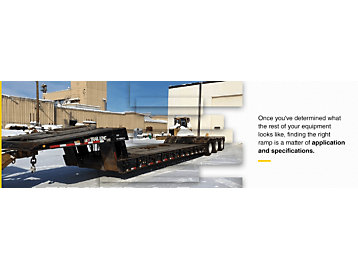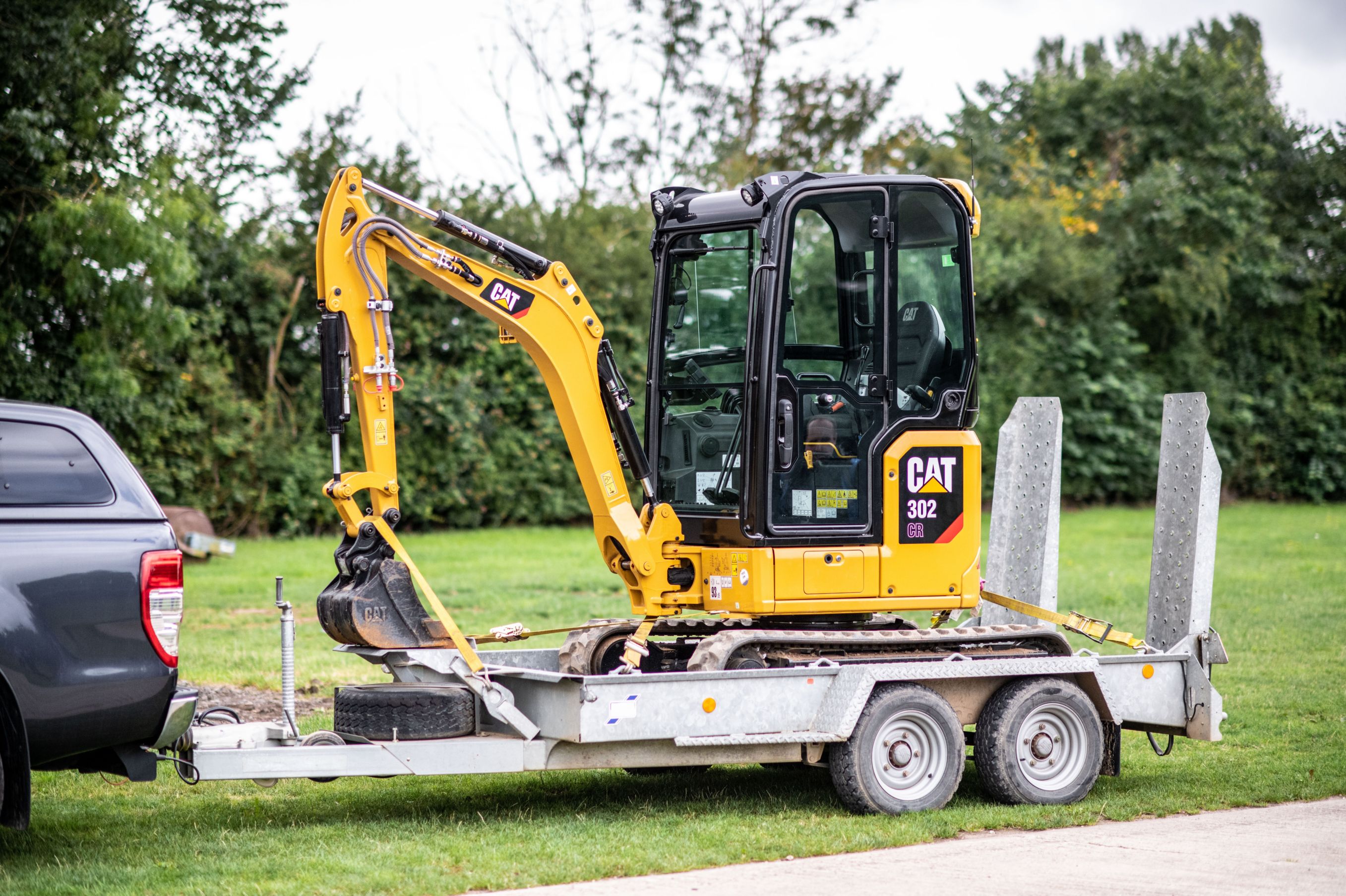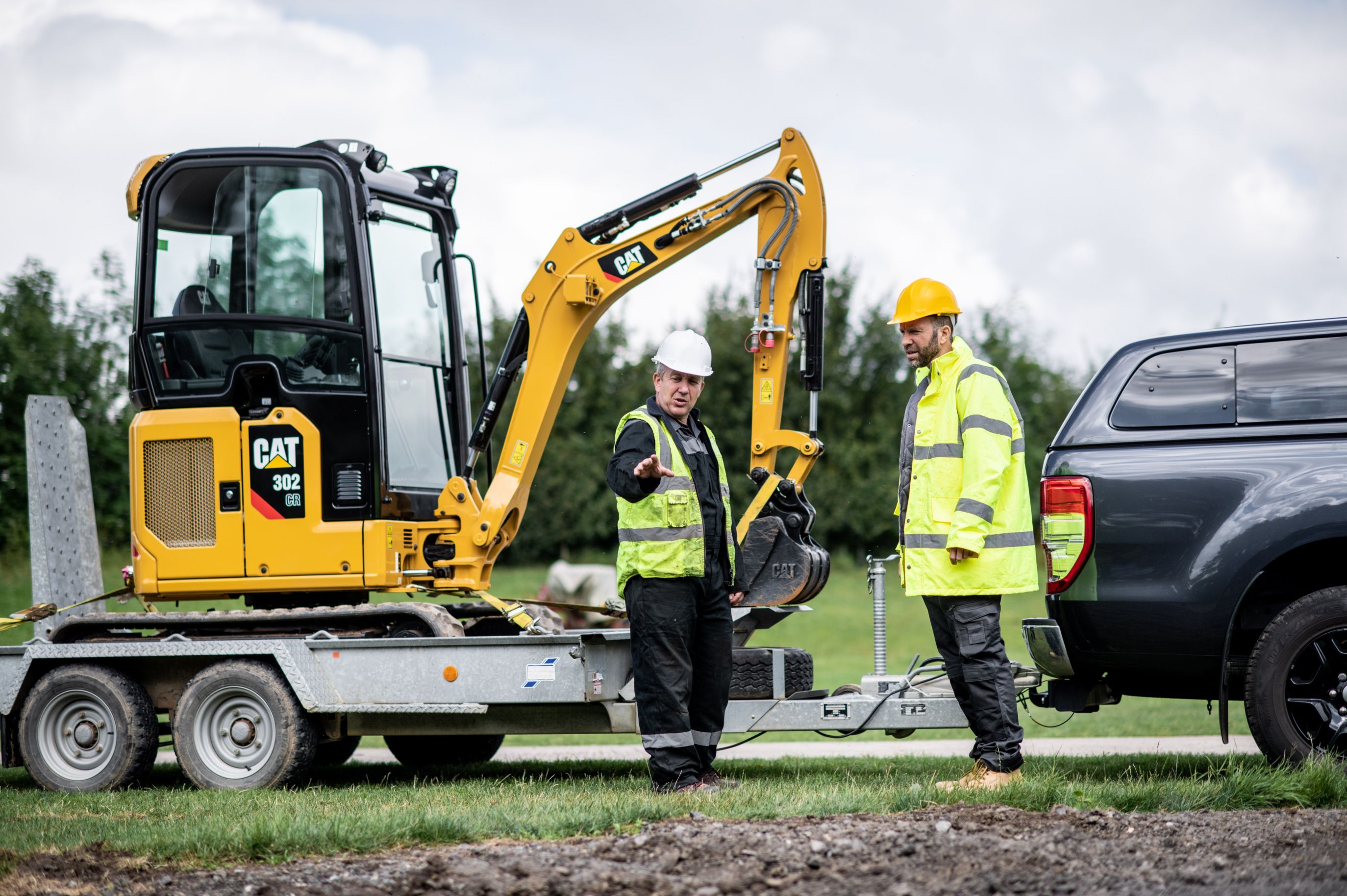If you already have an existing account with another Cat App, you can use the same account to sign in here
One Account. All of Cat.
Your Caterpillar account is the single account you use to log in to select services and applications we offer. Shop for parts and machines online, manage your fleet, go mobile, and more.
Account Information
Site Settings
Security
Author: Small Business Expert | August 17, 2020 | Topic: Used Equipment

When it's time to move a piece of heavy machinery, most people will load them onto trucks and trailers. To get your equipment onto those vehicles, loading ramps are a necessity. Knowing how to choose the correct loading ramp and what size ramp you need can make a significant difference in the success and efficiency of your equipment loading.
To help you select the right one, we've put together a guide to the types of heavy equipment trailer ramps for every application.
What Equipment Will You Be Loading?
The first step to determining which ramp you need is identifying the equipment you'll be loading. A skid steer loader isn't going to need as heavy-duty of a ramp as one for a full-sized excavator. Some ramps are designed specifically to aid in the job that their respective equipment performs. Most ramps will work with many kinds of machinery, but you'll always want to confirm compatibility before driving heavy equipment on one. You'll also want to know the weight of your vehicle when determining what ramp you need.
Just as the equipment being loaded is a critical consideration, so is the vehicle you're loading your equipment onto. Trailers are usually lower to the ground than trucks, meaning you can get by with a shorter ramp, though longer ones are usually safer and more versatile.
What Height Is Your Truck Bed?
Most standard-sized trucks will allow you to use short ramps, but you can always get a longer one. Using a longer ramp will make the slope less steep, so it may be easier for some machines to cross. Plus, the longer ramp will also work with lifted trucks. The higher up the truck bed sits, the more length you'll need from the ramp.
Types of Ramps and Applications
Once you've determined what the rest of your equipment looks like, finding the right ramp is a matter of application and specifications. The different types of ramps lend themselves best to specific situations and may or may not work with a wide variety of machines.

Here are some of the most common loading ramp options for heavy machinery:
1. Heavy-Duty Loading Ramps
As the name would suggest, heavy-duty loading ramps are ideal for heavyweight machinery. These ramps are sturdy, but you can typically dismantle and move them. You might find them in two-piece or one-piece designs. A two-piece ramp usually has a weight limit per axle, meaning each side will support up to a certain number of pounds. They usually don't need to be particularly long, but they are strong, supporting weights of tens of thousands of pounds. If you are loading machinery on uneven or rocky ground, the two-piece design can help level things out.
Two other types of heavy-duty ramps you may find include air ramps and hydraulic ramps. Both types use a form of automation to help lower and raise the large ramps, making it easier for individuals to operate. An air ramp works off of the air brake system in any truck equipped with it, while the hydraulic ramp connects to electricity in the vehicle or a separate battery and uses hydraulics to fully extend. These ramps are excellent for particularly heavyweight items where aluminum just doesn't cut it, and the ramps are exceptionally heavy.
2. Mobile Loading Ramps
The "mobile" part of these ramps comes from the wheels that attach to them, making them easy to move from place to place. If you're loading multiple trucks across a yard or moving lots of machinery, the easy mobility of these ramps can be a lifesaver.
3. Dock Loading Ramps
Many warehouses have docks that are relatively high up, preventing the standard-height ramps from being usable. Dock ramps are portable but allow access to these higher-up locations from the ground. You can drive vehicles up all the way to the dock with them.
4. Step Deck Trailer Ramps
These ramps are usually in two parts with one ramp for each axle. They are easy to assemble and disassemble and can support a wide range of vehicle weights. Typically, aluminum is the material of choice for these due to its strength and low weight. These ramps are used solely for moving the vehicle onto or off of a trailer or other area. They don't have any space to support turns or other maneuvers.
5. Forklift Loading Ramps
Common on yards, these uniquely shaped ramps provide space for a forklift to maneuver and drop loads. They feature a traditional ramp design with extra space for the forklift to move at the top. They have an "L" shape with a tall bottom. Other designs are simply wide, regular-shaped ramps that provide plenty of room. Forklift loading ramps are perfect for locations that do a lot of materials handling and need to maneuver these vehicles.
Assistance and Safety Requirements
Think about how much assistance you'll have during the load. The more help you have, the better off you may be with a shorter ramp. The assistant can help direct you and ensure you stay on track. If you do not have a helper, using a longer ramp may be easier to work with. It can minimize the steepness of the angle, so you can move slower and more safely.
Whether you have help or not, safety requirements must be met. Here are some common safety items you may need:
- Cam buckle straps or tie-down ratchets to keep the ramp securely connected
- Helmets
- Other PPE, such as gloves, boots and eyewear
Always follow safety measures outlined in your ramp manual, such as parking your truck on stable ground and not using a ramp with an angle that is too steep. Ensure operators are well-trained and stay alert at all times.
Browse Our Used Trailers and Trucks Today
Of course, a ramp is useless without a trailer or truck in which to load it. Buying used is an excellent way to save money and get exceptional quality from your equipment. Cat® Used offers trailers to assist you in a wide variety of loading and transportation options for your business.
Cat Used also offers an extensive inventory of quality tools and equipment. Most of our machinery is thoroughly inspected, appraised and cleaned before being posted for sale, and many of our dealers offer warranties, so you can trust your equipment to last. And if you're unsure of what trailer or truck is best for your needs, our dealers can help you with the decision.
Check out our collection of used trailers and trucks today!




